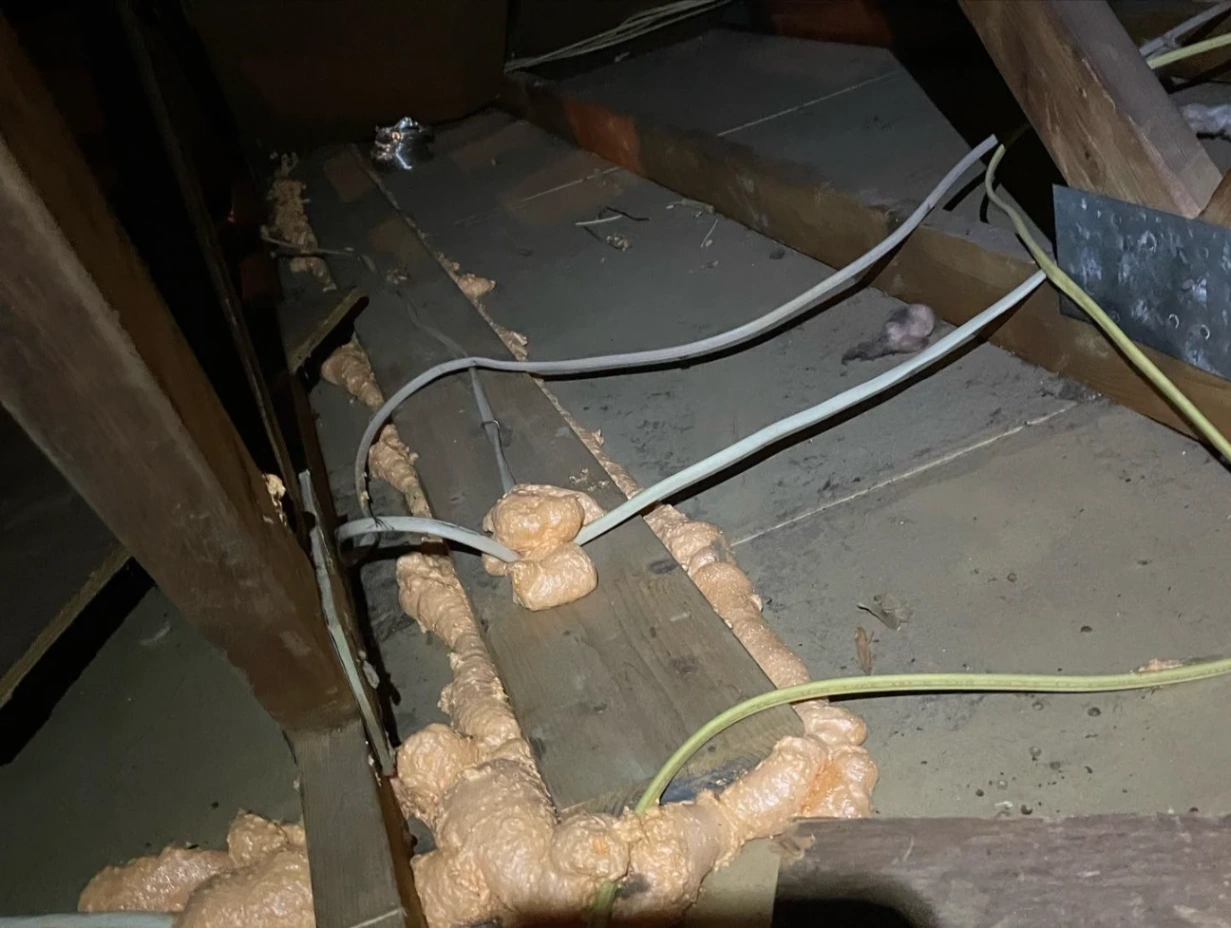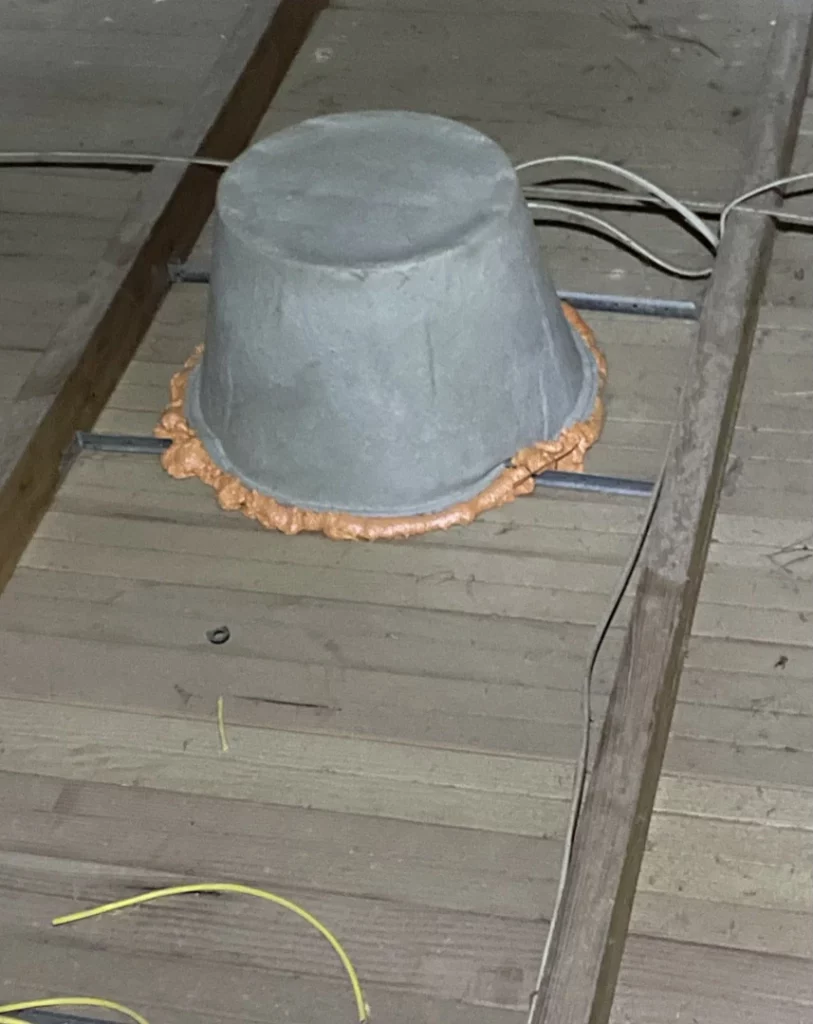
For many people in Pasadena, seasonal allergies feel like an unavoidable part of spring and fall. While you can’t control the pollen count outdoors, you can take meaningful steps to control your indoor environment. Air sealing is a foundational strategy for creating a healthier home by establishing a physical barrier between you and outdoor allergens. It involves systematically finding and closing the small gaps, cracks, and openings in your home’s exterior. This process significantly reduces the amount of pollen, dust, mold spores, and other irritants that find their way inside, directly improving indoor air quality and helping to relieve allergy symptoms.
This article breaks down the seven key ways that a properly sealed home helps protect your family from seasonal allergies. With years of experience in home performance and insulation, Peninsula Insulation, LLC has seen how addressing air leakage can make a substantial difference for homeowners. The information here is based on building science principles and practical application in Maryland homes.
The most direct way air sealing helps is by physically blocking allergens from entering your home. Every unsealed crack around windows, doors, electrical outlets, and plumbing penetrations is an open door for pollen and fine dust particles. When the wind blows, it creates pressure that forces outdoor air, along with its allergens, into your living space.
According to the Asthma and Allergy Foundation of America, allergies are the sixth leading cause of chronic illness in the U.S. By sealing these entry points, you create a more effective building envelope that separates the conditioned, filtered indoor air from the allergen-heavy outdoor air. This is especially important during peak pollen seasons in Pasadena when ragweed, tree pollen, and grass pollen counts are high.
Moisture is a key ingredient for mold growth, and mold spores are a powerful indoor allergen. Air leaks are a primary source of uncontrolled moisture intrusion. Humid summer air can infiltrate wall cavities through these gaps and condense on cooler surfaces, creating the damp conditions that mold needs to grow.
The U.S. Environmental Protection Agency (EPA) explains that controlling moisture is the most effective way to manage indoor mold growth. Air sealing prevents this vapor-driven moisture from getting into your home’s structure in the first place. This helps keep building materials dry and makes your home a much less hospitable environment for mold and mildew.
Bonus Tip: Pay special attention to sealing leaks in historically damp areas like basements, crawlspaces, and around bathroom fixtures to get the most impact on moisture control.
Pests like cockroaches, mice, and other rodents can enter a home through surprisingly small cracks. Once inside, they leave behind droppings, saliva, and dander that contain potent allergenic proteins. These particles can become airborne and trigger serious allergic reactions and asthma attacks. Air sealing closes off the common entry points these pests use to get inside, from gaps in the foundation to openings around utility lines. By denying them entry, you eliminate the source of their allergens.
Your HVAC system’s filter is your main line of defense against circulating indoor allergens. Its effectiveness, however, is compromised in a leaky house. When your system runs, it can pull air from wherever it can, not just through the intended return vents. This means it pulls unfiltered, dirty air from attics, crawlspaces, and wall cavities, bypassing the filter entirely.
Air sealing forces a much higher percentage of your home’s air to pass through the filter before it gets circulated. This allows the filter to do its job properly, capturing dust, dander, and pollen that’s already inside.
| Source of Air Entering HVAC | Unsealed Home | Air-Sealed Home |
|---|---|---|
| Filtered Return Vents | 60% – 80% | 95% – 100% |
| Unfiltered Leaks (Attic) | 10% – 20% | < 5% |
| Unfiltered Leaks (Crawlspace) | 5% – 10% | Minimal |
| Unfiltered Leaks (Walls) | 5% – 10% | Minimal |
This table illustrates how sealing ensures the air you breathe is actually being cleaned by your HVAC system.
The “stack effect” is a natural airflow pattern in a home driven by temperature differences. In the winter, warm air rises and escapes through leaks in your attic and upper floors. This creates a vacuum effect that pulls cold, often damp and musty, air in through leaks in your basement or crawlspace. In the summer, the effect can reverse. This constant, uncontrolled air exchange actively pulls allergens like mold spores from low areas and dust from high areas into your living space. Air sealing disrupts this pattern, stabilizing the pressure within your home and stopping the stack effect from working against you.
High indoor humidity doesn’t just encourage mold; it also creates the perfect breeding ground for dust mites, another major indoor allergen. Dust mites thrive in warm, humid conditions. Information from the American Lung Association confirms they cannot survive when relative humidity is kept below 50%. In Pasadena’s humid climate, air leaks allow sticky, moist outdoor air to constantly infiltrate your home, forcing your air conditioner or dehumidifier to work overtime. By sealing these leaks, you gain much better control over your indoor humidity, making it easier to maintain a level below 50% and reduce dust mite populations.
An attached garage can be a significant source of indoor pollutants. Cars track in pollen, and garages often store chemicals, paints, and gasoline that can off-gas. Small leaks in the shared wall and ceiling between the garage and your home allow these pollutants and allergens to seep directly into your living area. A thorough air sealing job includes sealing this connection point, creating a critical air barrier that protects your family from garage-sourced irritants.
Bonus Tip: Use a fire-rated caulk or sealant for the shared wall between your garage and house to ensure you are maintaining the fire barrier while also air sealing.

Before starting an air sealing project in Pasadena, MD, it’s helpful to think about a few factors to ensure you get the best results.
Reducing seasonal allergy symptoms often requires a multi-pronged approach, and controlling your indoor environment is a step you can take today. Air sealing your Pasadena home provides a strong defense against outdoor allergens by blocking their entry points, controlling moisture, and improving the effectiveness of your HVAC system. By understanding where your home is vulnerable, you can make targeted improvements that lead to cleaner air and better health.
If you’re ready to explore how air sealing can improve your home’s health and comfort, the next step is a professional assessment. To discuss your specific situation or to schedule an evaluation, contact Peninsula Insulation, LLC. You can reach the team by phone at (410) 770-2624 or by email at wil@mdsprayfoam.net. A thorough inspection can identify the key areas for improvement and create a plan tailored to your home.
While every individual is different, many homeowners report a noticeable reduction in allergy symptoms like sneezing, stuffiness, and itchy eyes. By lowering the overall “allergen load” in your home, you reduce your daily exposure and give your immune system a break.
Professionals use a range of durable materials depending on the size and location of the leak. This commonly includes high-quality caulk for small gaps around trim and windows, expanding polyurethane spray foam for medium-sized gaps around pipes and wires, and rigid foam board for large openings.
This is a common concern, but a properly sealed and ventilated home feels comfortable, not stuffy. The goal of air sealing isn’t to eliminate all air exchange but to control it. Uncontrolled leakage is replaced with controlled mechanical ventilation from exhaust fans or fresh air systems, which you manage. This leads to better, healthier air.
Air sealing can be done effectively at any time of year. The work is performed both inside and outside the home, and the materials used are stable across a wide range of temperatures. Mild, dry weather is often easiest for technicians, but there’s no need to wait for a specific season to improve your home’s health.